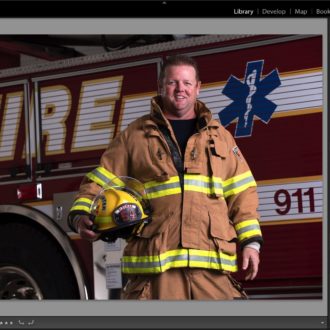Value in your images
Here is another post from my friend Steve Gustafson continuing our talk about the value in an image.
If you have seen Pete Collins in person, you know that Pete is a tall man.
My opening sentence is not intended to start a conversation about Pete’s height. It’s purpose was to point out how the brain responds to a perception. You started reading and at once your perception of the words caused you to build an image in your mind. Once I said that Pete was a tall man, you created your own idea of his actual height. If you are 5’ 2”, you may consider Pete to be around 6ft. However if you play basketball you may consider a tall person to be 7ft. In other words you mentally created a value for the word tall from you personal perspective. Tall is a relative value depending on that which it is compared.
In my previous blog post, I referred to a photograph as being visual communication. Most of our western culture is very comfortable with written communication because we are taught to read and write at an early age. Good writers will use words to help their readers form mental values in their mind. This is why they use adjectives and adverbs along with descriptive phrases. These descriptive words add value to a subject in hopes of causing some type of emotional response to that subject.
In the same way writers create values with words, photographers create values with elements in the frame of a photograph. Remember you choose a subject and other elements in the frame produce a narrative about the subject. In other words our narrative is made up of elemental values that describe our subject. In Example #1, we have a simple narrative. The subject is the car and the color produces a particular value about that car.
Example 1:
Example #2, is another simple narrative about Daisies. Not only are the Daisies white with yellow centers (color value) but there are a lot of them (quantity value). (In this case the subject is somewhat subjective which we will discuss in another post.)
These examples are simple but the idea is to help you realize that everything within the frame of a photograph has a value. Your viewer has a desire to perceive something in your photograph. This perception will cause some type of emotional response. Also these values will either add to a viewer’s perception of the subject or they will be a distraction.
Look back at example one. Your eye recognizes the car and the car gains value because of its color. However, very soon after perceiving the car your attention was attracted to the yellow plastic on the ground. The plastic also has a value and that value quickly drew your attention. The job of the photographer is to decide if that yellow plastic compliments the story being told about the car or if it is distracting.This is entirely up to the photographer and what they intend to express about the subject. Notice also the two small red dots in front of the windshield. If you look closely, the larger of the two is a colored ball mounted on top of the radio antenna. The second dot is a reflection of the ball in the windshield. The photographer must decide if these dots are a distraction or not.
Example #3 is the original photograph. As you can see the narrative of the car takes on a different meaning because of values left in or out of the frame.
Example #4 is one more modification of values. This variant seems to imply that the car is standing out FROM the trash rather than being surrounded or engulfed in it.
Photographs are a photographer’s story or narrative. Pete and I talk a lot about the journey of perfecting our craft. If I want to perfect my craft I must become a better story teller. I cannot afford to get lazy by not paying attention to every element in the image. To tell better stories I must create value for my subject. Value gives meaning and the more meaning in a story, the more emotionally connected a reader or viewer becomes with the subject.






